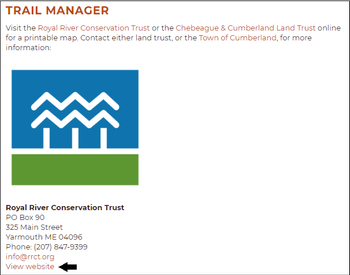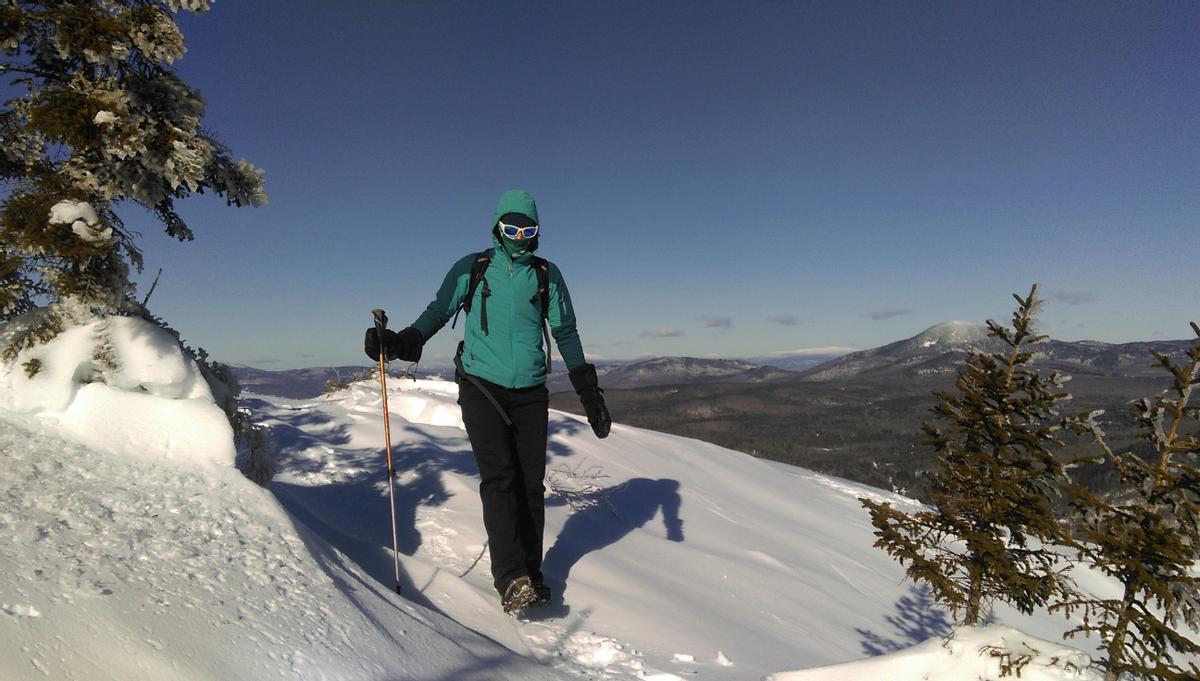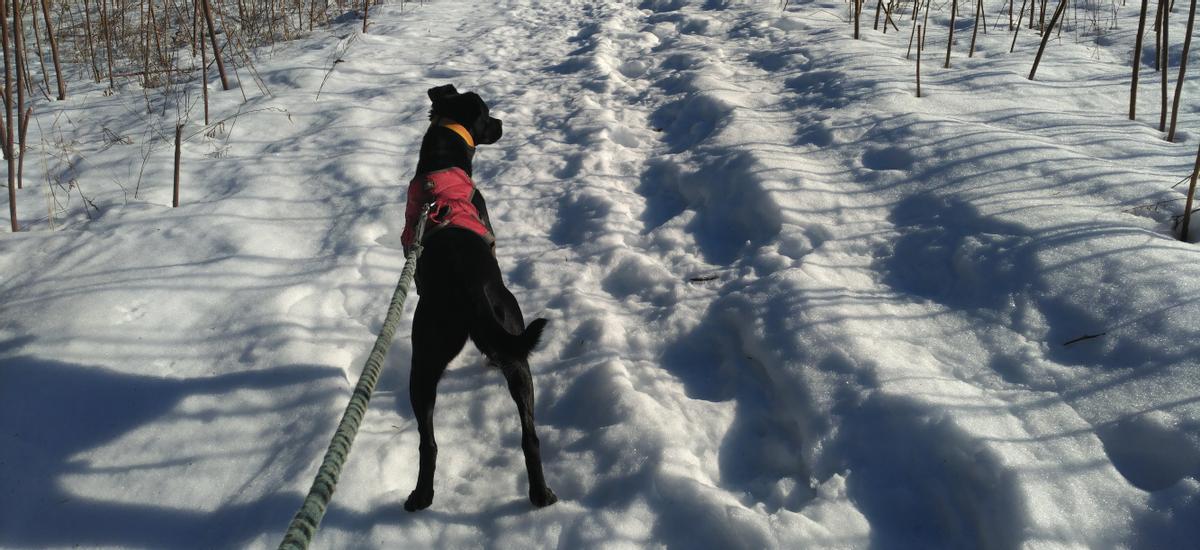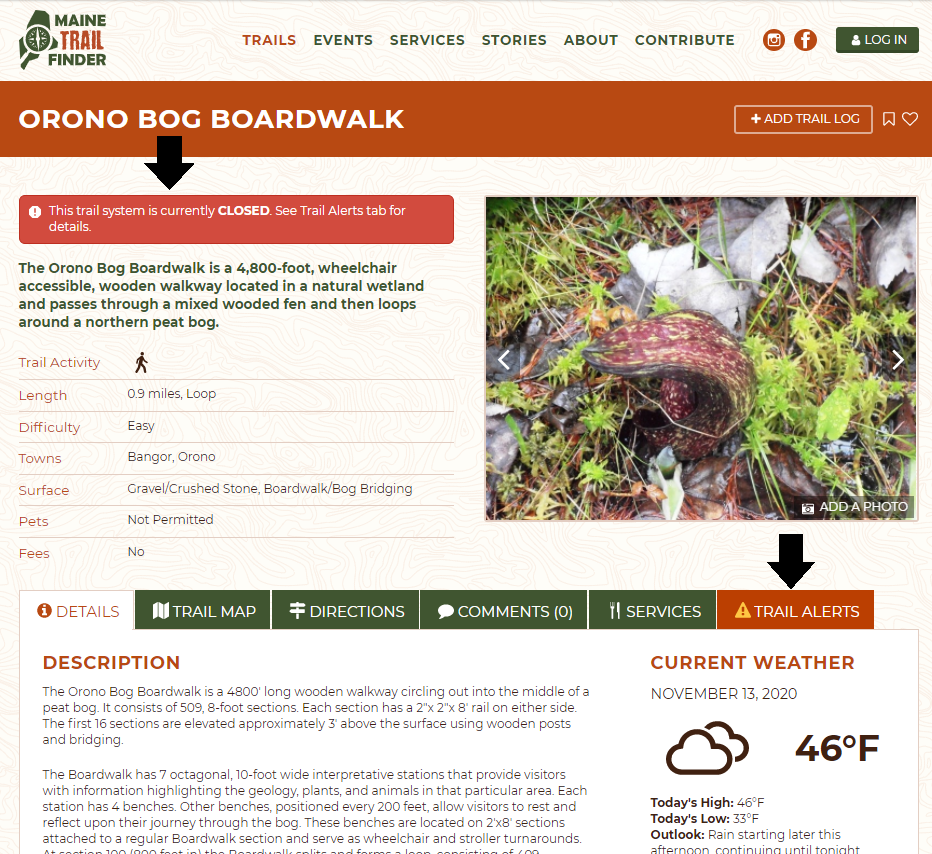
Hiking is a great way to get outdoors. Other than a few items like a sturdy pair of shoes, you don’t need specialized gear and you don’t need special skills. All you need is to be able to find trails that are appropriate for you, know how to recreate responsibly, and how to keep yourself and others safe in this time of COVID-19.
We all know by now how to stay safe indoors - wear a mask, stay physically distanced from others, wash your hands - but how does this translate outdoors? It is "safer" to be outside than inside, but how safe is it really? Hiking is a wonderful way to recreate during the pandemic, but there is still a risk of COVID-19 transmission if you encounter other people. However, with a bit of forethought, you can enjoy hiking while minimizing your risk of contracting or passing on COVID-19 while also minimizing negative impacts to the trails themselves.
Always do your homework before heading out on a trail, to ensure you know what you are getting yourself into and that the trail is within your abilities. In regards to the pandemic, there are additional pieces of information to consider.
What are the peak-use times for this trail? Typically, trails are likely to be more crowded Saturday 10 AM - 4 PM, while early in the day there may be fewer other hikers out. However, each trail is unique. Consider peak-use times specific to the situation - is the trail a popular spot to watch the sunrise or sunset? Or is it where many people exercise before or after work?
Have a back-up plan. Before you leave your house, pick out a few options for your hiking destination. If you arrive at a trailhead and it’s packed with cars, consider visiting another nearby trail instead, or coming back to hike the trail at a less crowded time of day. Another way to avoid the crowds that make it difficult to physically distance is to seek out less well-known trails. Now is the perfect time to explore those trails you’ve never visited that are right in your own backyard. Using the “Find trails near me” option in a Maine Trail Finder search is a great way to find these lesser-known trails!
In addition to your usual hiking supplies, throw some hand sanitizer and/or wipes (at least 60% alcohol) in your pack. While hiking itself doesn't involve touching surfaces, a trail may have hand-rails or ladders, places to rest at benches or picnic tables, or an outhouse on the trail or at the trailhead. Avoid touching such surfaces unless you have to, and use your sanitizer before and after your hike. If you use wipes, pack them out in a small baggie and dispose of them in a trash can at home.
Check with the organization that manages the trails you plan to hike. Most trails in Maine are currently open, but there may have been changes to the trails due to COVID-19. Many restrooms, visitor’s centers, or other facilities are closed, and even some trails themselves are temporarily off-limits. Not only do closures and guidelines vary for different areas, but they change frequently as the pandemic evolves. By researching this information in advance, you will avoid driving to a trailhead only to have to turn around or getting left out in the cold!

Don’t forget your mask! The virus can still be transmitted even out in the open. Masks should have at least two layers of fabric, cover your mouth and nose, and fit snugly on your face.

Wear your mask in the parking lot if there are other people present. On a crowded trail, keep your mask over your mouth and nose for the duration of your hike. On a more secluded trail, where you occasionally pass other hikers, keep your mask handy or around your neck so that you can put it on before nearing other hikers. Masks are especially useful if you see a friend and stop to chat! Even if you are able to step off the trail to let others pass, use your mask as they go by. If you have questions about when to wear a mask, here are detailed guidelines from the State of Maine as of November 6, 2020.
Hiking trails in New England are often narrow paths through thick woods, which can make it a challenge to stay 6 feet apart. Be on alert for hikers headed your way; if you see someone approaching in the distance, look for a good location to step off the trail and allow the hiker to pass by. This would ideally be on a rock surface so that you don’t contribute to erosion along the sides of the trail. If there is no rocky ground available, look for a solid, dry surface with minimal shrubs or plants, to avoid damage to vegetation. If there is no location to reasonably step off the trail without causing damage to your surroundings (such as stepping on lichen or other fragile vegetation) or yourself (if on, say, a cliff-side trail!), be extra-sure to pull your mask up over your mouth and nose before you pass by your fellow hiker.
Remember, hikers may come up from behind as well. If this occurs and they are traveling faster than you, step off the trail onto a durable surface to let them pass at a safe distance.
If you approach a narrow boardwalk or bog bridging, look to the end to check for other hikers coming your way before you start. Try not to step off the bridge -- you could damage fragile vegetation or end up in mud up to your knees!
Keep the number of your hiking party small and limited to either your household or close friends and family. If you pause to rest or check the map at a trail junction, move off the trail so that others can pass at least 6 feet away.
Dogs are members of your household, too! They need to keep their social distance from people and other dogs whenever possible. Keep your dog on a leash, and when passing other hikers, keep your dog close.

Not feeling well? Exhibiting any symptoms associated with COVID? Traveling from a high-risk location? Stay home! It is not worth risking the health of others. Wait until you are feeling better, until you have been tested with a negative result, until you have quarantined for two weeks… and THEN go out and enjoy the trails! You will be able to enjoy them all the more knowing you are not at risk of infecting other hikers.
If you are traveling from out-of-state, familiarize yourself with the current guidelines for traveling to Maine.
The parks or properties you plan to visit might have their own COVID-related guidelines or even closures. Be sure to inform yourself about such guidelines and follow them for the health of all.

These are stressful times, and we are all suffering from pandemic fatigue. All the more reason to be considerate and show kindness to your fellow hikers. Take into consideration how your actions might impact other hikers, and follow the principles of Leave No Trace.
If you like to listen to music while you hike, use ear buds instead of playing it through a speaker; many hikers like to listen to the bird song and the wind in the trees, and someone else’s music may negatively impact their experience. Similarly, put your phone in silent mode, and if you must take a call, avoid shouting into the phone, keep your voice low.
If you pass hikers on a trail and they greet you, say “hi!” back (from a safe distance of course)! Rest assured they are just being friendly.
Treat the trails with respect as well -- the trail may be on land under private ownership, and whether private or public, someone has worked hard to maintain this trail. This means take your trash with you, leave flowers and rocks in their place, and stay on the marked trails.
By practicing trail etiquette and using common sense, you are showing respect for the environment, as well as respect for your fellow hikers, and helping to ensure that all visitors are able to enjoy these natural places.
Success! A new password has been emailed to you.